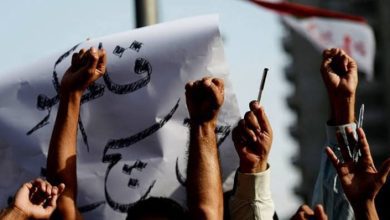By Sher Ali
The three girls had lost their house and school as well but could not let go of their books in flood while alighting from boats in Dera Ghazi Khan of Southern Punjab. The girls believed in the power of education.
After that the girls were shifted to camps temporarily established by the government of Punjab, where they were given food and provided shelter. The school of the girls was badly affected in DG Khan which is located in Koh-e-Suleman mountain range. The hill torrents spread havoc in the range and hundreds of thousands people were relocated. Their houses and schools were damaged during the natural calamity that occurred in monsoon. The women who are considered a vulnerable segment of society suffered a lot. Thousands of girls could attend the schools during the traumatic monsoon. Furthermore, their many schools were converted into relief camps.
Dr Murad Raas, the Education Minister Punjab had declared that a total 950 schools were damaged by flood water in Southern Punjab. According to him, these schools were closed for the protection of children. He had added that the majority of the students were shifted to nearby schools for the time being. He had announced that Rs20.8 million were allocated for repairing the schools’ buildings.
According to Schools Education Department (SED) Punjab had collected data of 995 schools damaged by flood and of these 635 are primary schools, 137 elementary schools, 201 high schools and 22 higher secondary schools. Other districts where rains and floods have damaged schools are Bahawalpur, Bahawalnagar, Multan, Muzaffargarh and Vehari.
Based on an estimation by Pakistan Education Sector Working Group-EiE more than 3.5 million children have had their education interrupted due to the flood destruction.
It is pertinent to mention that 7000 schools those were not damaged turned into relief camps. This will further increase the destruction of school infrastructure specially the wash facilities.
After the Covid-19 pandemic, this is an another huge loss of children education. According to the article 25A, constitution of Pakistan 1973, education is a fundamental right of every child.
Over 1,900 schools across the province were also damaged and remained non-operational. According to media reports, 250 schools were affected in Punjab’s Jhang district alone. Due to the massive devastation of the flood, the schools were closed and no education was departed, while the ratio of girls’ education was already less. Thus the flood caused huge damage.
According to a government official the data had been shared with local and international partners so that help could be provided for the restoration of schools.
A female head teacher of a primary school from Southern Punjab shared on the condition of anonymity that if our school is damaged, the roof of the school could fall anytime. Government should repair the damaged building within no time so that education could be imparted without any interruption.
Secretary-General of the United Nations (UN), Secretary-General AntónioGuterres visited Pakistan so that he could observe the situation of flood as an eye witness. After seeing the situation, he appealed to the International community to help Pakistan. Upon this international Community and International partners came forward.
According to United Nation International Children Emergency Fund (UNICEF), more than two million children were inaccessible to schools while more than 27000 schools were damaged in the county.
UNICEF’s Global Director of Education Robert Jenkins, upon returning from flood-affected areas in Pakistan, had said about the devastation of flood, “Now, faced with the uncertainty of when they (Children) will be able to return to school, and having already endured some of the world’s longest school closures due to the pandemic, they are experiencing yet another threat to their future.”
He shared that UNICEF had established more than 500 temporary learning centres in the worst-affected districts and supported teachers and children with education supplies.
The Deputy Secretary SED (Elementary), Akram Jan , said that makeshift arrangements were made during flood days. Tents were provided so that education could be imparted. Furthermore, data of damaged schools were collected so that buildings could be repaired. The data was also shared with donor agencies too. He further shared that schools are being repaired.








